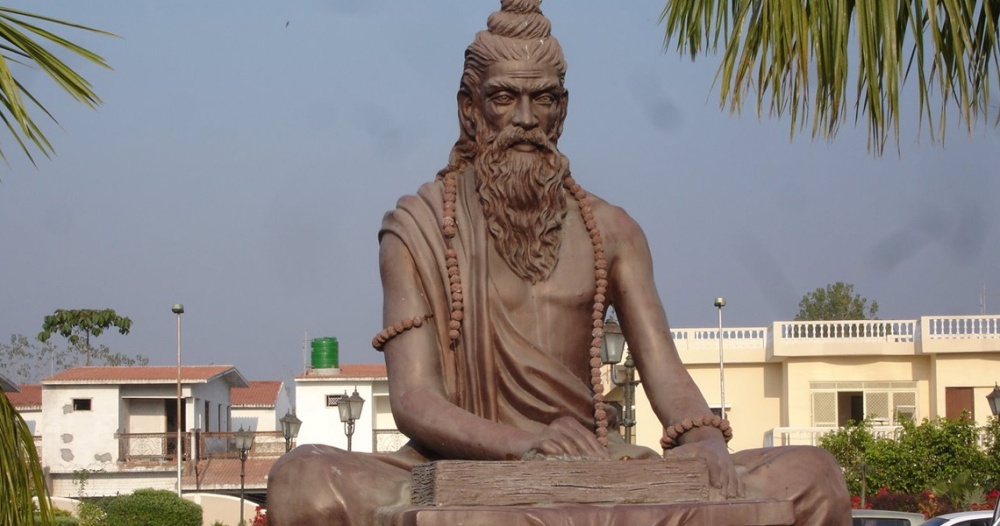
12 Powerful Sounds that can change your life
May 11, 2018“The Practice of Yoga helps YOU evolve beyond your present limitations
if you do the necessary work upon yourself.”
So here goes the story of Yoga…
Once upon a time, long ago, all the munis and rishis(seers/sages) approached Lord Vishnu (god of preservation and protection) to tell him that even though He had given them the means to cure illnesses through the knowledge of Ayurveda (an ancient Indian form of healing), people still fell ill. They also wanted to know what else can they do, when people got sick.
Many times it was not just physical illness, but the mental and emotional illness that needs to be dealt with. Anger, lust, greed, jealousy, hatred etc. How does one get rid of all these mental impurities? The question was that is there a formula to address these human challenges that cause unbounded miseries?
The story goes that as Lord Vishnu was lying on the bed of snakes with master serpent Adishésha who had 1,000 heads, many Rishis (sages) approached Him for a formula to end human pain and misery. On their request, Lord Vishnu gave them Adishésha,(the symbol of awareness), who took birth on earth as Maharishi ( supreme sage) Patanjali.
At the time of Patanjali almost between 500-250 BC, there was no developed system of yoga. It was he who developed yoga based on a loose set of doctrines and practices from the Upanishads. The Upanishads are part of the Aranyakas, philosophical concepts that are part of the Veda, the most ancient body of literature of Hinduism.
Patanjali gave these combined philosophical and esoteric writings a common foundation in his Yoga Sutra, a set of 196 sutras or doctrines or concise aphorisms that form the principles of yoga. He also drew upon Samkhya, the oldest classic system of Hindu philosophy. Patanjali’s yoga accepted Samkhya metaphysics and the concept of a supreme soul.
Maharishi Patanjali established an eight-stage discipline of self-control and meditation which is popularly known as Ashtanga Yoga. The individual sutras (verses) lay out the entire tradition of meditation. They also describe the moral and physical disciplines needed for the soul to attain absolute bliss or freedom from the body and self
Literally, Yoga means to join. The closest corresponding word in English is Yoke- “to join.”
So join what?… Yoga teaches us to realize the innate nature and being of 3 aspects of our being. Body-Mind-Soul. So are these not innately joined? Of course, they are but not in our conscious realization. Patanjali was the first to introduce in a basic easy to learn, understand and practice format, how to achieve the purpose of life in 8 Steps. He called it 8 Steps to ENLIGHTENMENT and Self-realization.
Maharishi Patanjali’s 8 Steps to Enlightenment
1. 5 YAMAS-Universal moral commandments or ethical discipline.
1. Ahinsa (Non-violence) 2. Satya (Truth) 3. Asteya (Non-stealing) 4. Brahmacharya (Celibacy)
5. Aparigraha (non-hoarding)
2. 5 NIYAMA- Personal disciplines one must follow daily
1. Shaucha (Internal cleanliness of body) 2. Santosha (Contentment) 3. Tap (Endurance) 4. Svadhyaya (Study of the self) 5. Ishvara Pranidhana (Dedication to the almighty)
3. Asanas- Postures and poses of the body for various works in order to optimize results.
A stable and comfortable physical posture which helps attain mental equilibrium
4. Pranayam-Yogic Breathing
Pranayama is the perfect control of the life-currents through control of breath and is the process by which we understand the secret of prana(Life Energy) and manipulate it. No one can make any spiritual progress without the practice of pranayama. One who has grasped this prana has grasped the very core of cosmic life and activity. Through various exercises and training in pranayama the yogi tries to realize in this little body the whole of cosmic life, and attain perfection.
5. Pratyahara- Withdrawal of the five senses from external objects
Pratyahara means literally “control of ahara (food),” or “gaining mastery over external influences, of which hunger is the most compelling desire.” It is compared to a turtle withdrawing its limbs into its shell — the turtle’s shell is the mind and the senses are the limbs. The term is usually translated as “withdrawal from the senses,” but it has many meanings.
6. Dharan- “holding”, “holding steady”, “concentration” or “single focus”.
Patanjali explains concentration as the “binding of consciousness to a single spot.” Sometimes we see it in a musician who is focused on the music to the exclusion of all else, or in an athlete in a tense moment of a crucial game. Yoga practitioners actively seek out this depth of concentration in the practices of asana (posture) and pranayama (breathing exercises). I believe that dharana can be found whenever a person is fully present and focused on an activity or object in here and now.
7. Dhyana-Meditation
Patanjali defines that the highest level of Dharna-concentration results in Dhyana-meditation. It the place where one goes time-space continuum. It is the point where past-present and future merge as forever one.
8. Samadhi-The ultimate merger
The word samadhi literally means sama and dhi – sama meaning equanimity and dhi meaning buddhi or the intellect. If you reach an equanimous state of intellect, it is known as samadhi.
The basic nature of the intellect is to discriminate – we are able to discriminate between a human and an animal because of our intellect. This discriminatory quality is very important for survival. Discrimination supports and executes the instinct of survival.
If we transcend the intellect, you become equanimous. This does not mean you lose the ability to discriminate. A state like this gives us an experience of the oneness of the existence, the unification of everything that is.

About the Author
Dr. Amitabh Singh is the founder of AadyantaLife and Bio-Energetic & Crystal Healer and Wellness Coach. He provides Alternative and Complementary Healing therapies to difficult ailments including Cancer. He specializes in Mindfulness Meditation Coaching for Corporate and Business Leaders. His thought-provoking Enlightening Lectures.




